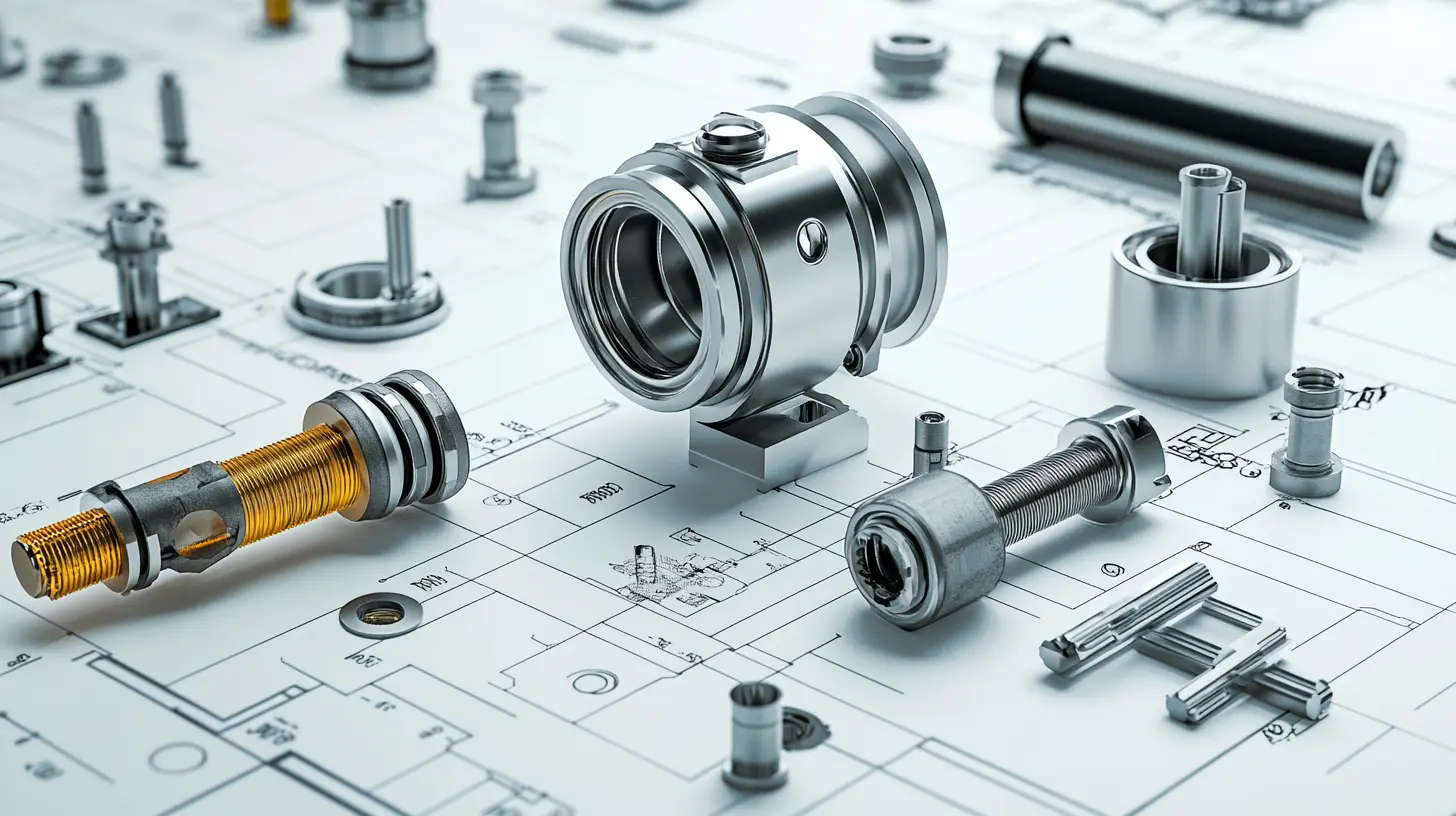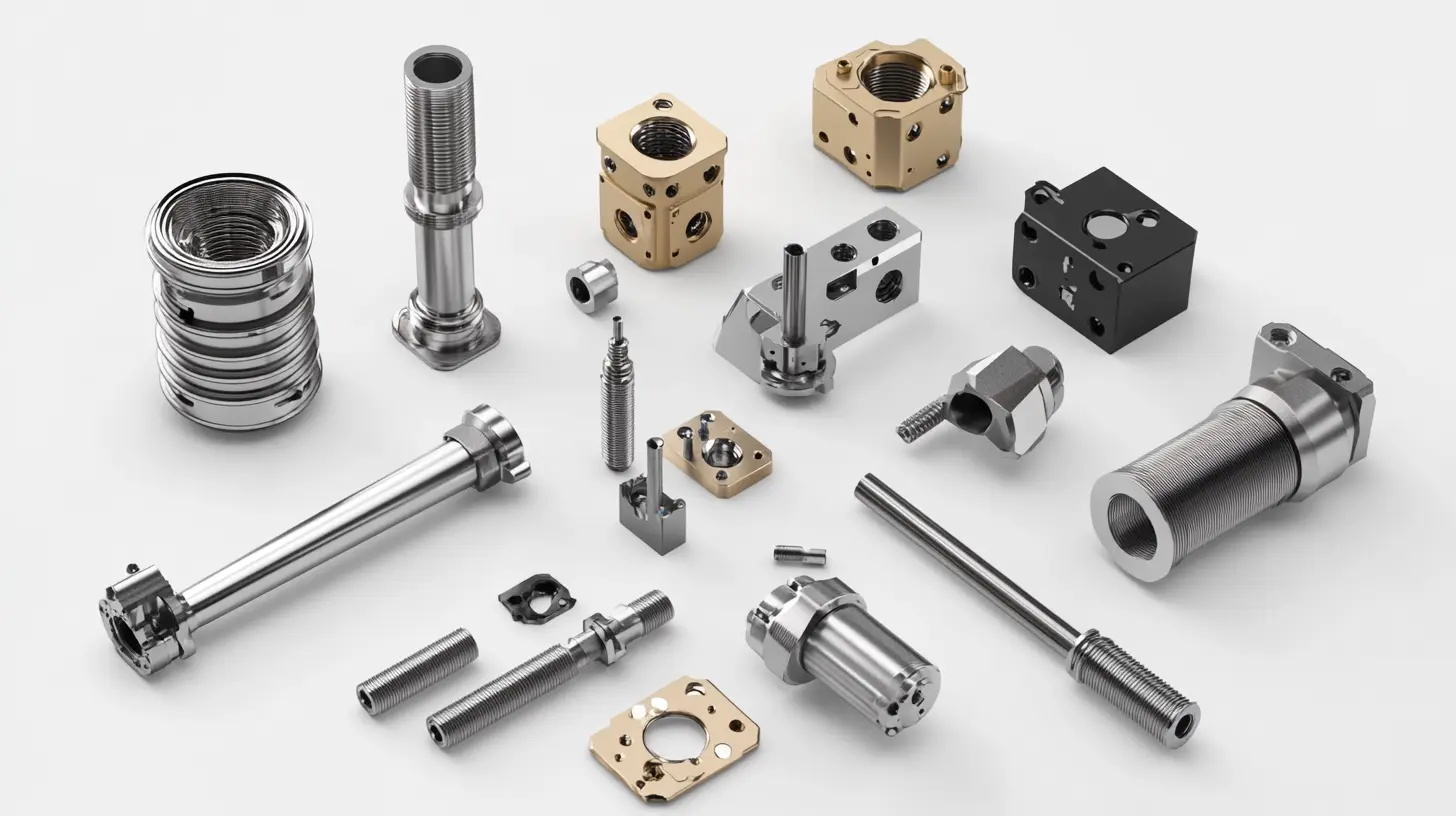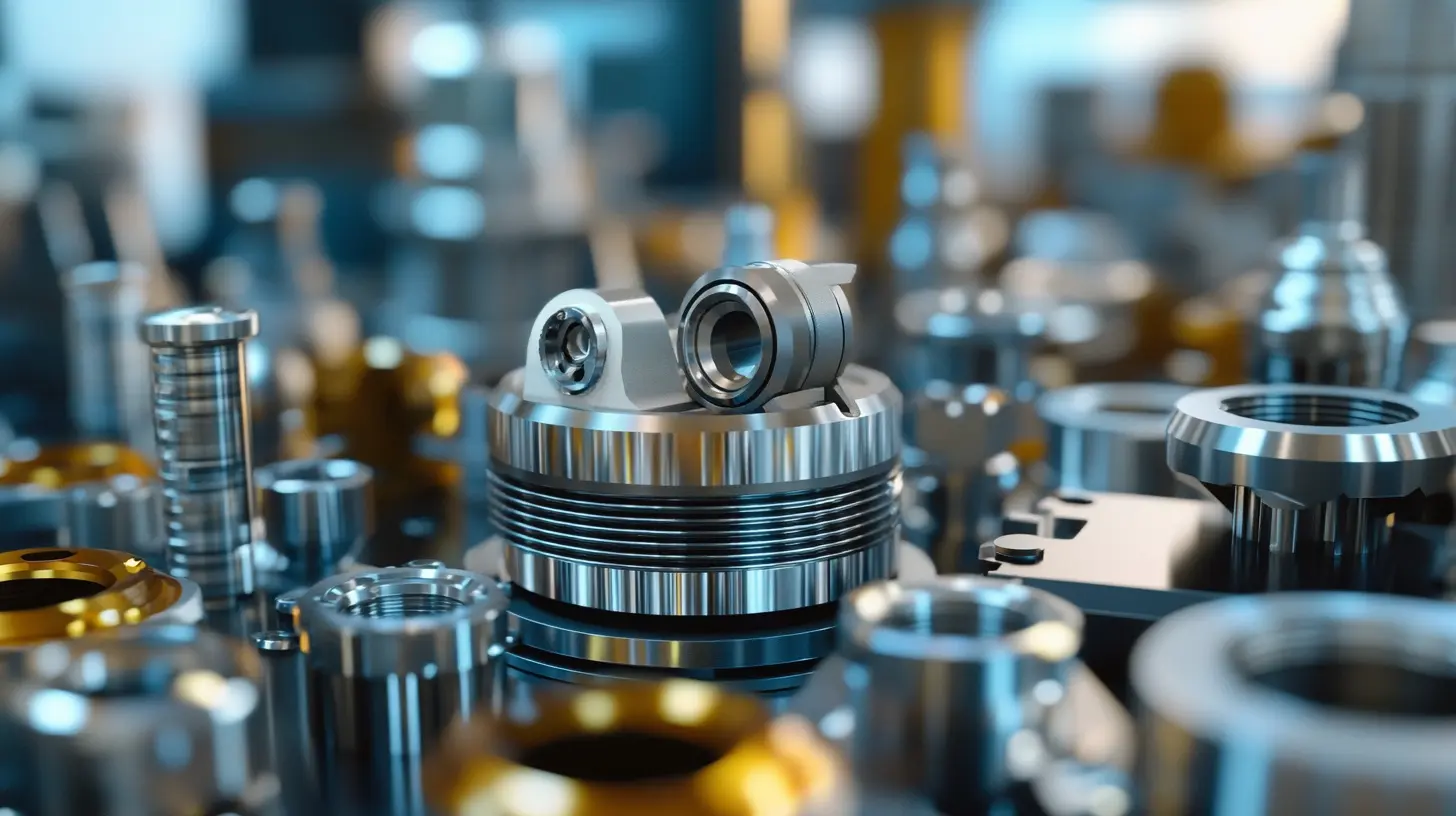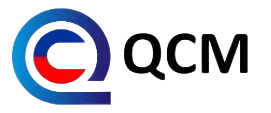With the world's markets becoming increasingly competitive, there has never been a greater demand for any fresh solutions in Adapters & Assembly Parts. Companies must prepare for an innovative deviation from orthodox procurement trends towards efficiency, sustainability, and cost-effectiveness. Xiamen Qianci Magnet Technology Co., Ltd. (QCM Magnet) specializes in generic magnetic fixing solutions, poised for the evolutionary transformation of precast concrete elements, primarily with products such as Shuttering Magnets, Formwork Magnets, and the many connection accessories.
As industries move with the times, for there one industry that fights to maintain even ground with all the technological mishaps and market trends, Importance as well as the scale of prerequisites for quality Adapters & Assembly Parts will only increase day by day. QCM Magnet Developments in magnetic solutions have not only enabled smoother assembly but have also contributed to better efficiency of the complete project. With a population increase in their products in advanced design and functionality, QCM Magnet provides proof of emerging procurement trends across the globe that consider reliability and performance as key factors. In this blog will be hosted by showcasing all new ideas on innovations in Adapter & Assembly Parts searching at how companies such as QCM Magnet are making strides in the construction industry with regard to quality benchmarks.

Emerging global procurement trends actually specify and highlight the need for specialized components such as adapters and assembly parts. The industrial evolution with the changes also brings an innovative impetus and hence demands a rethink of sourcing by manufacturers. However, adapters and assembly parts tend to fulfill the definition of being functional and also form critical enablers to enhance interoperability and streamline production processes among markets. A trend worth mentioning is moving towards greenness and ecology in procurement. The companies that have sought suppliers tend to ask for environmentally accountable processes by manufacturers. This compels manufacturers to develop adapters and assembly parts which result in minimal waste and use recyclable materials. Moving towards sustainable procurement, it is the quality and life cycle of these components that matter. Moreover, technology advances are also changing the scene of procurement. Smart sourcing and e-procurement platforms automatically aid companies to locate and procure quality adapters and assembly parts from a host of world suppliers. As data analytics and AI become more entrenched in the procurement process, enterprises can model demand patterns and correlate their supplies and inventories to have the components at hand when needed, thus end result producing an almost agile and highly responsive supply chain towards an overall efficiency increase in operations. The focus on adapters and assembly parts within emerging global procurement trends might seem to narrow down on cooperation, and green, and technology move-up; however, these are the companies who see these changes and adjust to them for continued competitiveness and contribution to a changing manufacturing landscape.

This is what the future of new age materials is bringing to adapters and assembly parts: this is indeed making the functionality and durability hit new heights. This new trend towards global procurement for innovative solutions encourages manufacturers to adopt state-of-the-art technologies and materials to innovate their products. This will induce higher efficiencies, makes life longer, and therefore will integrate it into the entire manufacturing ecosystem: adapters will perform better.
Innovative new developments such as the selection of Hurom's E50ST Slow Juicer as one of the winners for the 2025 Red Dot Design Award indicate that today designing matters by function just as much as it does defining the market. Similarly, CASETiFY's vow to redefine the standards of protection via resilient materials adds to the way advanced materials can enhance a product's performance in reliability and satisfaction to the user. These examples mark a trend where companies find innovative materials not only to meet industry standards but oftentimes exceed it and connect worldwide to the consumers' demand for quality and sustainability.
Further innovations in functional coatings and digital printing technologies being pursued by companies as 什方科技 are core examples of the overriding significance of advanced materials in modern manufacturing. These companies improve the modern aesthetic value of their products while consonantly making their designs fulfilled by including superior materials according to industrial applications. As such dynamics will grow and evolve in this competitive marketplace, so shall the design effect of material science carve a future of robust and even more efficient adapters and assembly components.

Source: 2023.
Supply chain disruptions are causing enormous changes in worldwide market creation and management.The inconsistencies posed by supply chain disruptions are expected to linger into 2024, according to a Gartner study, which states that 61 percent of supply chain leaders surveyed believe this will be the case. That is a major impediment for companies that expect a steady flow of components into their production processes.
When the pandemic hit, it revealed gaps in conventional supply chains, forcing some companies to rethink their procurement strategies. McKinsey states that 75 percent of organizations are reevaluating their supplier networks, seeking diversification of sources to mitigate risk. Companies have accelerated a trend toward partnering with regional suppliers, utilizing technology to enhance visibility across the supply chain. Such a move not only reduces lead time but also builds the sustainment base for resilience against future disruptions.
Procurement is already complicated for other reasons, including world politics and fluctuating prices for raw materials. The Institute for Supply Management reports that nearly 70 percent of manufacturers have had difficulty sourcing materials for geopolitical reasons. This brought adapters and assembly parts being procured from the local market, thereby threatening innovation with respect to manufacturing processes and materials being utilized. As organizations overcome the outcome of this situation, the drive for future procurement strategies in the industry would be based more on sustainability and efficiency in the longer term.

The technology revolution in the manufacturing and sourcing activities of the adapters and assembly parts is heralding a new range of digital solutions that can enhance efficiency and collaboration. As per MarketsandMarkets, the global digital manufacturing market is expected to reach $620 billion by 2025 due to advances in IoT, AI, and 3D printing technologies. This transition eases and streamlines manufacturing activities and provides companies with an opportunity to address global procurement trends.
In the process of technological implementation for adapter production, manufacturers are adopting platforms for real-time data sharing, cloud-based design tools, and automated inventory management systems. According to research conducted by Deloitte, 67% of manufacturers believe that in three years' time, these digital technologies will have a strong impact on their supply chain visibility and performance. Integrating technology results in reduced lead time and minimizes error for the assembly parts to be responsive to market demand.
Digital twin technology allows organizations to capture, simulate, and analyze the performance of their assets before going into physical production. As PwC states, companies implementing digital twin technologies may experience a reduction of up to 30% in time-to-market and a reduction of 20% in operational costs. As this industrial landscape rapidly changes, the emphasis on digital solutions in adapter manufacturing and sourcing is sure to change the competitive landscape.
Sustainability nowadays stands to be the cardinal point mainly in adapter and assembly manufacture, marking a drastic transition in the industry toward eco-friendly practices. A recent project pointed to collaboration among industry partners to promote eco-friendly flexo-packaging, proclaiming a broader commitment to lowering the environmental impact within the industry. From USD 3.2 billion in 2024, the USB-C video adapter market is expected to go up to USD 8.5 billion by 2033, at a CAGR of 11.5%. The increasing demand for multifunctional and versatile adapters is one point for their growth, whereas the other point is the opportunity for green innovations in this arena.
While following sustainable development trends, the most recent happenings in electric vehicles (EV) indicate some developments guided by sustainability. Consider, for example, considerable reductions in the prices of certain EV adapter models aimed at increasing their accessibility and encouraging user adoption while simultaneously contributing to less electronic waste. Companies have additionally launched charging cable adapters intended to mitigate e-waste by allowing consumers to use their existing working cables instead of throwing them away.
Therefore, the more the present industry evolves, sustainability will become an increasingly important factor influencing strategic sourcing in the future. The effect of promotion through new technologies and environmentally friendly materials extends product performance alongside ever-demanding consumer behavior, which favors eco-friendly solutions. This synergy between innovation and sustainability creates the future backbone of the electronics industry, with these adapters and assembly parts endorsing a circular economy.
The procurement of the adapters and assembly parts is now witnessing a more strategic potential, focusing on cost-efficiency that does provide any favourable quality. As per the report of IBISWorld, the global electronic connector market, with the adapters thereof, is predicted to hit $108.5 billion in 2025 at a compound annual growth rate of 6.2%. This increase reflects a growing demand for the suppliers to innovatively procure goods while keeping a balance between price and quality.
One important way of cheap procurement is to use advanced technology and automation in its sourcing. The latest surveys show that 76% of procurement leaders are investing in digital tools to operate. The organizations use data analytics and AI-based insights to forecast demand better, maintain inventory levels wherever possible, and negotiate terms more favourable than lower prices. This reduces overheads and allows companies to adjust to the changing market without compromising quality.
Moreover, good relations with several suppliers provide a cushion against price volatility in the supply chain. According to Deloitte's research, firms that maintain a diverse supplier base have reported 43% reduction in the volatility of procurement cost. Collaborating with suppliers, and being abreast of their capabilities and performance, will better inform companies as they seek to improve quality and manage costs effectively.
Simultaneously advancing the requirements of technologies and mini-procurement trends, thereby unreservedly charging the global market for adapters and assembly parts, is likely to evolve quickly in 2023, when an estimated worth of about $960.72 million can be said to have characterized the global flow battery market, with projections indicating that this figure will rise to $1.02897 billion in 2024. The market is expected to be valued at an impressive $272 billion by the year 2032, having reflected an extremely robust compounded annual growth rate throughout the forecast period.
Likewise, the market for uninterrupted power supply (UPS) systems will witness a healthy growth trajectory. The figures indicated in the estimates show a market size of $17.39 billion by 2024 and are expected to expand to $24.91 billion by 2033 at a compound annual growth rate (CAGR) of 5.4%. This is a clear pointer toward the increasing dependence on stable power at different industrial levels, which should, over time, encourage demand for adapters and assembly parts through which effective power management is enabled.
The entire competitive scenario of players in the adapter production is changing as companies strive to create innovative concepts for various applications. With rapid development in technology, efficient partnerships and strategic alliances would probably prove crucial in sustaining the competitive edge in the marketplace where competition is so intense. The industry is adapting to the new regime of global procurement trends while key player capabilities are positioned at leveraging efficiency to meet changing market needs.
Consumer demands have had a sway in making the advent of innovative adapters and assembly solutions an ever-increasing necessity. High-quality accessories that enhance user experience were deemed essential in early 2020 by the launch of smartphones. Beyond functionality, it is specifically about compatibility with accessories that optimize their smartphone experience such as specialized lens kits or adapters that allow for creative photographic opportunities and seamless connectivity. This shift indicates that manufacturers must always be ahead in terms of trends ands always keep innovating their product ranges.
The future of adapters and assembly solutions is to forecast these upcoming changes in consumer preference. As technology evolves, smart attributes integrated in accessories such as real-time usage feedbacks or adaptive designs leaning towards various devices could reshape the entire market. Moreover, with users becoming more and more interested in versatility and sustainability, manufacturers will concentrate on modular designs allowing easy upgrades to prolong the life of both accessory and device.
Therefore, research and development need to be put into innovative paths that communicate with consumer expectations. This would, however, mean that with the suitable understanding of technology and relevant market dynamics, a company will deliver upon solutions meeting today's requirements, putting such organizations in front of potential opportunities within this very dynamic industry. At the intersection of technology, creativity, and consumer insight lies the ultimate definition of the next generation of adapters and assembly solutions.
The industry is seeing a significant shift towards eco-friendly practices, with a commitment to reducing environmental impact, including collaboration on eco-friendly flexo packaging.
The USB-C video adapter market is projected to grow from USD 3.2 billion in 2024 to USD 8.5 billion by 2033, with a CAGR of 11.5%, driven by demand for multifunctional adapters.
Significant price reductions for certain EV adapter models aim to enhance user adoption and reduce electronic waste, along with the introduction of charging cable adapters that minimize e-waste.
Companies are leveraging advanced technology and automation in sourcing, utilizing data analytics and AI to optimize inventory levels and negotiate better terms with suppliers.
Companies with diversified supplier bases report 43% less volatility in procurement costs, helping to mitigate risks from price fluctuations and supply chain disruptions.
The global flow battery market is projected to grow from approximately $960.72 million in 2023 to about $1.02897 billion in 2024, eventually reaching $272 billion by 2032.
Effective partnerships and strategic collaborations are becoming crucial for maintaining market share as companies seek innovative solutions to meet evolving market demands.
The UPS market is forecasted to expand to $17.39 billion by 2024 and $24.91 billion by 2033, indicating increased reliance on consistent power sources across various industries.
The merging of innovation with sustainability enhances product performance and aligns with consumer demands for environmentally responsible solutions, supporting a circular economy.
Surveys indicate that 76% of procurement leaders are investing in digital tools to streamline operations and improve cost-effectiveness in procurement practices.





